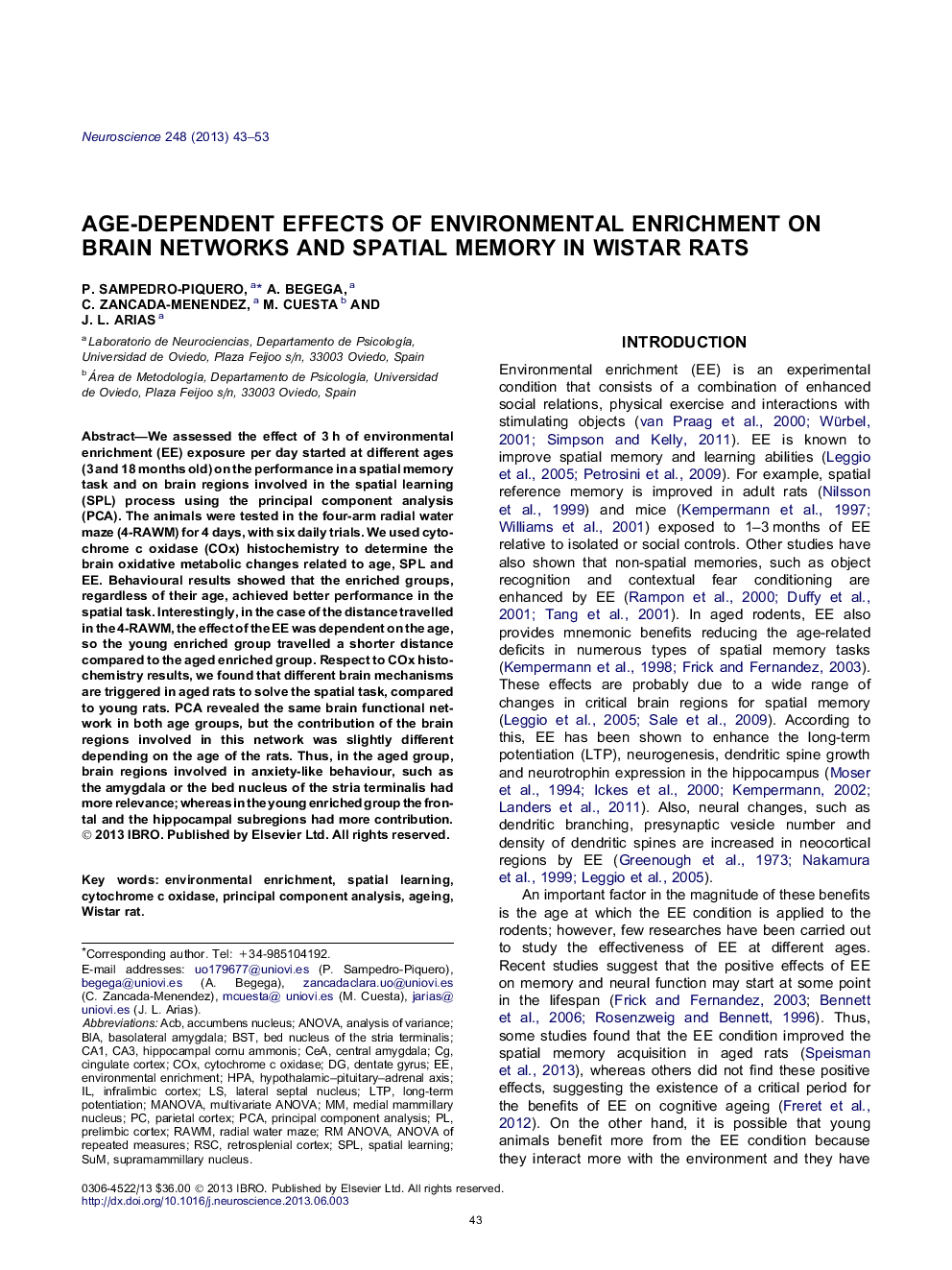| Article ID | Journal | Published Year | Pages | File Type |
|---|---|---|---|---|
| 6274677 | Neuroscience | 2013 | 11 Pages |
Abstract
We assessed the effect of 3Â h of environmental enrichment (EE) exposure per day started at different ages (3 and 18Â months old) on the performance in a spatial memory task and on brain regions involved in the spatial learning (SPL) process using the principal component analysis (PCA). The animals were tested in the four-arm radial water maze (4-RAWM) for 4Â days, with six daily trials. We used cytochrome c oxidase (COx) histochemistry to determine the brain oxidative metabolic changes related to age, SPL and EE. Behavioural results showed that the enriched groups, regardless of their age, achieved better performance in the spatial task. Interestingly, in the case of the distance travelled in the 4-RAWM, the effect of the EE was dependent on the age, so the young enriched group travelled a shorter distance compared to the aged enriched group. Respect to COx histochemistry results, we found that different brain mechanisms are triggered in aged rats to solve the spatial task, compared to young rats. PCA revealed the same brain functional network in both age groups, but the contribution of the brain regions involved in this network was slightly different depending on the age of the rats. Thus, in the aged group, brain regions involved in anxiety-like behaviour, such as the amygdala or the bed nucleus of the stria terminalis had more relevance; whereas in the young enriched group the frontal and the hippocampal subregions had more contribution.
Keywords
multivariate ANOVACOXBLARadial water mazeBSTAcbbasolateral amygdalaRM ANOVACeAPCACentral amygdalaMANOVAPrincipal component analysisanalysis of varianceANOVAlong-term potentiationLTPRAWMcytochrome c oxidasedentate gyrusEnvironmental enrichmentinfralimbic cortexParietal cortexprelimbic cortexhypothalamic–pituitary–adrenal axisHPAaccumbens nucleusbed nucleus of the stria terminalislateral septal nucleusMedial mammillary nucleuscingulate cortex
Related Topics
Life Sciences
Neuroscience
Neuroscience (General)
Authors
P. Sampedro-Piquero, A. Begega, C. Zancada-Menendez, M. Cuesta, J.L. Arias,
